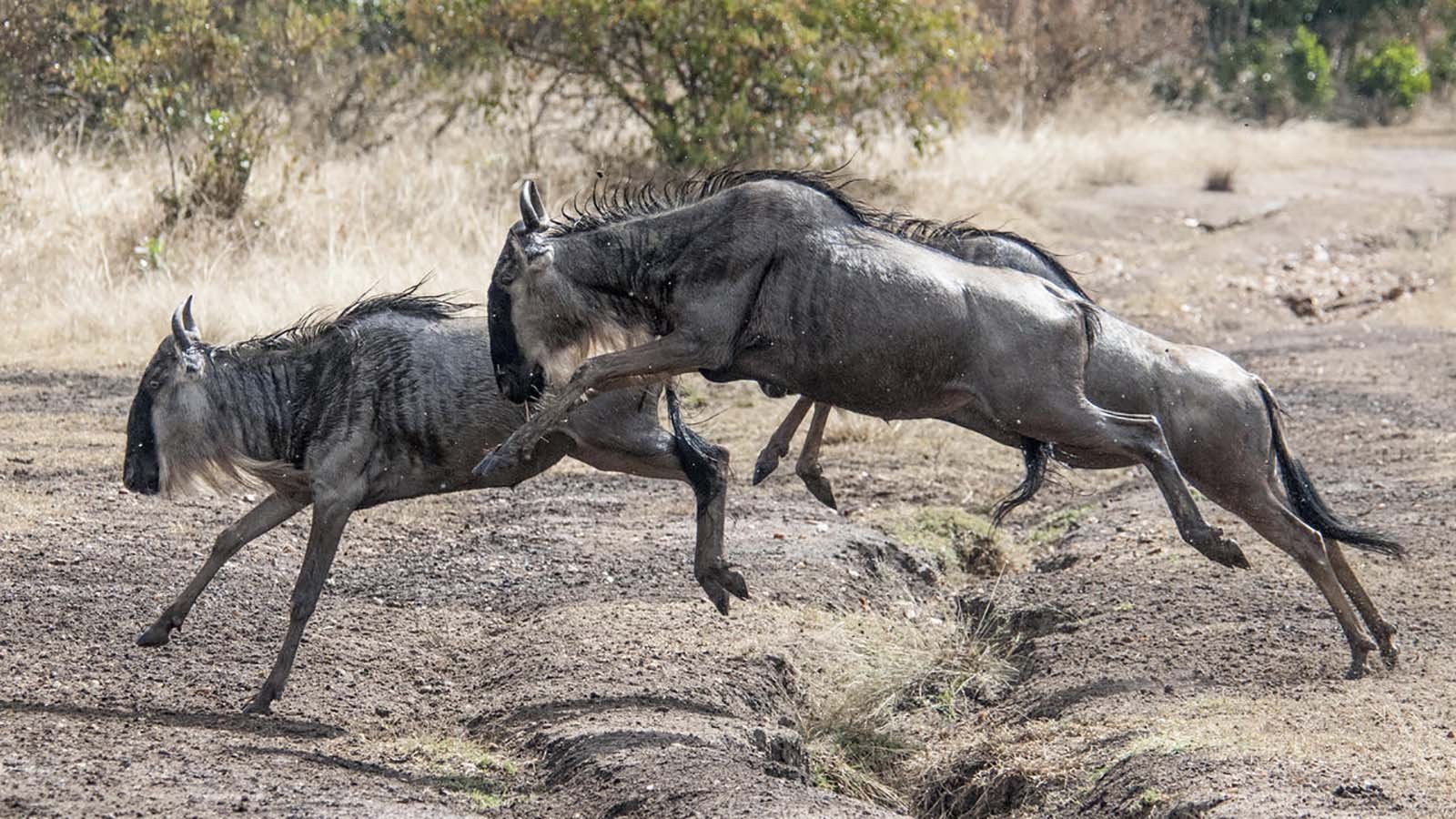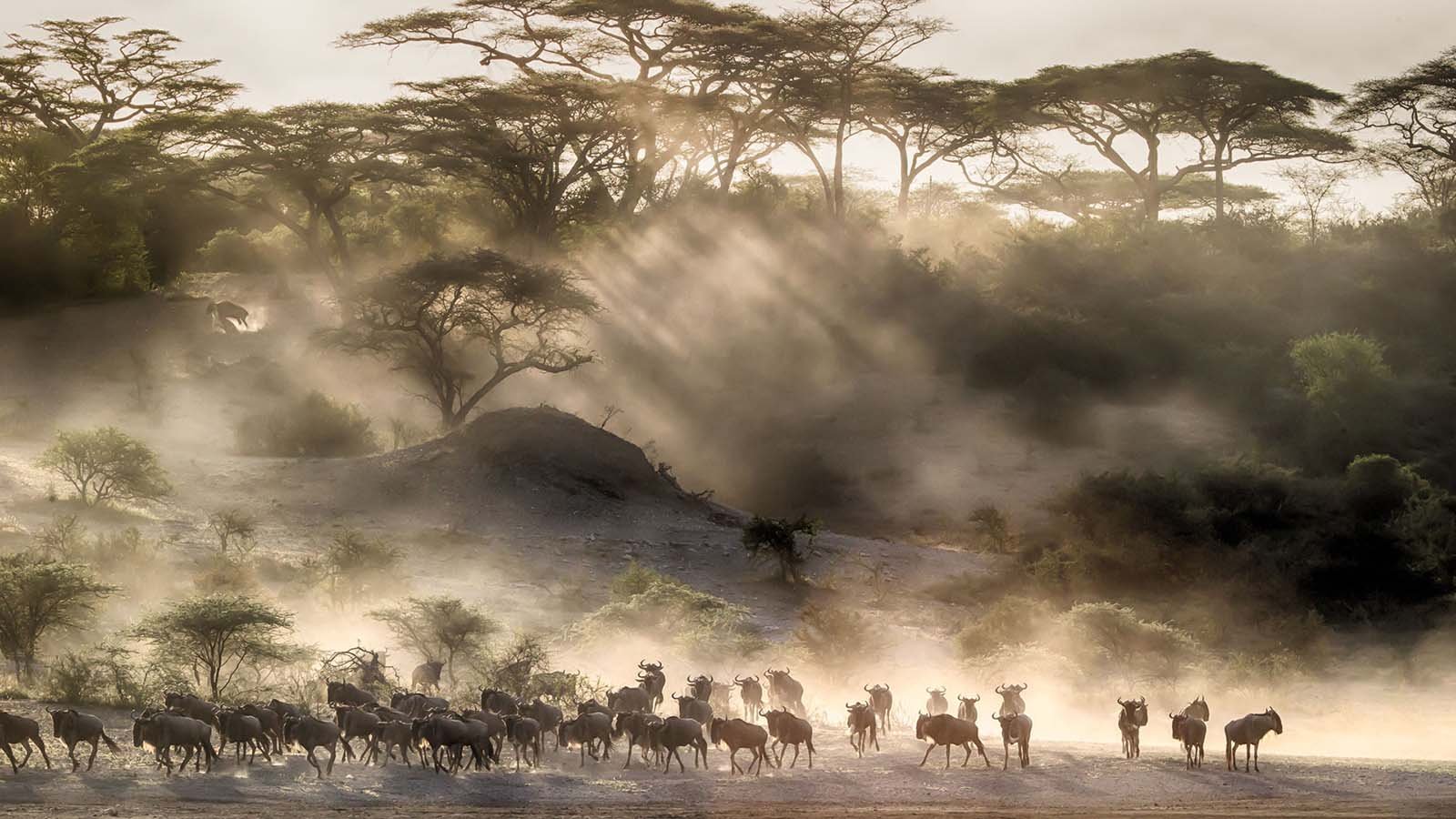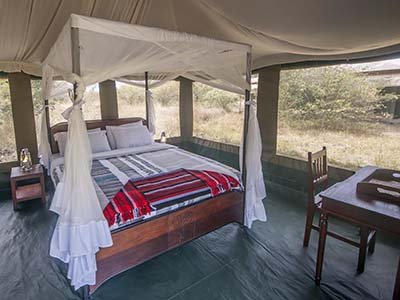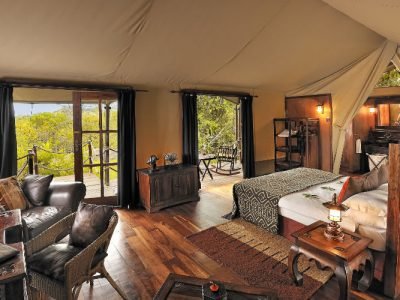The Serengeti National Park is a protected area in Tanzania, located in the Mara and Simiyu regions, that span the Kenya and Tanzania border. It is known for its abundant wildlife, including the “big five” game animals (elephant, lion, leopard, buffalo, and rhinoceros) and an annual migration of over 1.5 million wildebeest and zebras. The Serengeti is also home to a wide variety of other animals, including crocodiles, hippopotamuses, giraffes, gazelles, hyenas, and more than 500 species of birds.
The Serengeti is considered one of the best places in the world to see wildlife in its natural habitat, and it is a popular destination for safari tours. The park covers an area of approximately 14,750 square miles, and it is home to a number of ecosystems, including grasslands, woodlands, and swamps.
The Serengeti is also home to several Maasai villages, where the Maasai people, a semi-nomadic group of pastoralists, live and work. The Maasai have a strong cultural connection to the land and its wildlife, and they have traditionally coexisted with the animals in the park.
In March 2021, TripAdvisor named this park the greatest in the world. Ancient Maasai people gave the park its name, “Siringet,” which translates to “endless wide plains.”
The splendour of the scenery is mesmerizing.
Although the Serengeti National Park has grassy plains, woodlands, and shrub savannahs that are subject to periodic flooding, the park is most known for its grasslands. After a good rainy season, the landscape becomes green and is dotted with wildflowers, while during the dry season it is a brilliant golden colour. It has adapted well to the constant grazing that characterises the Serengeti, making it a veritable paradise for huge herbivores. Every once in a while, the endless horizon is broken up by kopjes (rocky outcrops) that are older than 2.5 billion years.
Wildebeest Migration in Serengeti National Park

Wildebeest migrating in Serengeti National Park, TanzaniaThe Great Migration, the most spectacular natural event on Earth, occurs in the Serengeti plains. The gnu antelope, or wildebeest (which literally translates to “wild cattle” in Afrikaans), is the undeniable star of the show. Hundreds of thousands of calves are born in the month of February, just weeks before the annual migration north begins. Even though there isn’t enough food for the 15,000 newborns who appear on peak days to escape the pursuit of waiting cheetahs, leopards, and lions that follow the migration.
You will never forget the sight of millions of wildebeest, zebra, and gazelle congregating in one area. During their yearly trek north, they sprint over grassy plains, dive headfirst into rushing rivers, and are relentlessly pursued by scavengers.
With over 11,000 elephants, 12,000 giraffes, and 350 cheetahs, the Serengeti plain is home to some of the most impressive wildlife watching in Africa, even without the migratory gazelle, wildebeest, and zebra. Hyraxes, which are the size of cats, are often seen roaming the kopjes. In addition to rhinos, aardwolves, and the rare serval cat, all three species of African jackals have been seen.
The one million wildebeests travel around 800 kilometres on an epic trek: in search for greener pastures and cleaner water each year. From around November until about May, they spend most of their time grazing in the southern Serengeti habitat. When the grasses dry up in the Maasai Mara, the herds migrate to the western Serengeti for the months of June and July before continuing their trek north.
Wildebeest aren’t the only animals that migrate, however; large herds of zebra and even Thomson’s gazelle often accompany the wildebeest. Grant’s gazelles also migrate, but over shorter distances and without much help from other animals.
The wildebeest migration’s path and timing are unknown. Allow at least three days if you want to make sure you see them, and more time if you want to make sure you see the major predators as well. Between November and May is when you have the greatest opportunity of seeing the migration.
Humans have just recently appeared in the Serengeti-Mara region, but the environment there has likely been in place for at least a million years. In the latter part of the 18th century, the nomadic Maasai people and their livestock began to arrive. Berhard Grzimek, a German naturalist, and his son Michael wrote the book Serengeti darf nicht sterben (“Serengeti shall not die”) in 1959. This book told the rest of the world about the Serengeti.
Birds of Serengeti National Park
- Rufous-tailed Weaver: This little, vividly coloured weaver is only found in Tanzania’s Serengeti and a few other locations. It is distinguished by its yellow breast and reddish-brown tail.
- Short-tailed Lark: Only the Serengeti and a few other places in Tanzania are home to this small lark. It is distinguished by its short tail and grey-brown colouring.
- Grey-crested Helmet-shrike: This medium-sized shrike is only found in Tanzania’s Serengeti and a few other places. It is recognised for its black and white and grey crests.
- Rufous-tailed Rock-thrush: This medium-sized thrush is found exclusively in the Serengeti and a few other locations in Tanzania. It is distinguished by its grey-brown feathers and reddish-brown tail.
- Grey-capped Social-weaver: This little, sociable weaver is only found in Tanzania’s Serengeti and a few other locations. It is recognisable by its brown and grey feathers.
Best Serengeti Safari Deals
A Safari in East Africa is an unforgettable experience, and the Serengeti should be a must-see destination in your itinerary. Located in Tanzania, the Serengeti ecosystem is home to some of the most iconic African wildlife, including elephants, rhinos, zebras, giraffes and many species of birds. You can join a safari tour through Kenya which includes a visit to Ngorongoro Crater and its surrounding area. Here you will have the chance to observe Maasai people living alongside animals like wildebeest as they traverse the Mara River.
The great wildebeest migration that takes place between July and October every year is something you won’t want to miss! To maximize your experience in this incredible region, you can also visit Lake Manyara National Park or even go on hot air balloon rides over the Serengeti to get an aerial view of this majestic landscape. An African Safari featuring the Serengeti is sure to be an incredible journey through one of nature’s greatest wonders.
- Length of the safari: Most safari tours range from 3 to 7 days, but you can also find longer or shorter options. Consider how much time you have available and what you want to see during your safari.
- Type of accommodation: Serengeti safari tours can include a range of accommodation options, from budget-friendly tents to luxury lodges. Decide what type of accommodation best fits your needs and budget.
- Mode of transportation: Some safari tours use 4×4 vehicles, while others offer walking or biking safaris. Consider what type of transportation you prefer and what will allow you to see the most wildlife.
- Inclusions: Look for a safari tour that includes the activities and experiences that you’re most interested in. For example, some tours include visits to Maasai villages or hot air balloon rides over the Serengeti.
Accommodation options for Serengeti National Park
Affordable tents to opulent hotels are all available as lodging alternatives in the Serengeti National Park. The following are some of the top places to stay in the Serengeti:
- Serengeti Safari Camp: This reasonably priced choice provides tented lodging with individual en suite facilities and power. The camp’s middle Serengeti location makes it simple to reach the park’s top sights.
- Serengeti Migration Camp: Situated in the heart of the Serengeti, this camp provides opulent tents with private verandas and en-suite bathrooms. The camp is well-known for both its near proximity to the wildebeest migration and its outstanding wildlife watching.
- Serengeti Serena Safari Resort: This elegant lodge has cosy accommodations with individual balconies, a pool, and a selection of eating establishments. The lodge’s middle Serengeti location provides great opportunities for observing wildlife and access to the wildebeest migration.
- Singita Grumeti Serengeti: The luxurious tented camp Singita Grumeti Serengeti provides roomy tents with individual terraces and en-suite bathrooms. The camp is situated in the Grumeti Reserve, a region outside the park that is well-known for having a high concentration of predators.
- Acacia Migration Camp: situated in the Serengeti’s heartland, close to the Seronera Valley, which is renowned for its abundant wildlife and superb game-watching. Acacia trees around the camp, provide sweeping views of the Serengeti’s undulating plains.
Consider your budget and the experience you’re seeking while selecting lodging in and around Serengeti. Intimate safari experiences may be had at certain lodgings that are more remote, while a greater selection of facilities can be found at lodgings that are closer to Serengeti National Park and are more in demand.

When choosing accommodation in and around the Serengeti, consider your budget and what type of experience you’re looking for. Some accommodations are more secluded and offer a more intimate safari experience, while others are located in more popular areas around Serengeti National Park with a wider range of amenities.
Getting to Serengeti National Park
By Road
The Serengeti National Park is located in northern Tanzania, east of Lake Victoria.
To get to the Serengeti National Park by road, you can take a bus or drive from Arusha, which is a major transportation hub in Tanzania. The drive from Arusha to the Serengeti National Park takes about 6-7 hours by car. You can also take a bus from Arusha to the town of Serengeti, which is located just outside the national park. From there, you can hire a car or take a safari tour to explore the park.
By Air
To get to the Serengeti National Park by plane, you can fly into Kilimanjaro International Airport, which is located about an hour and a half drive from Arusha. From there, you can take a bus or hire a car to get to the Serengeti National Park. Alternatively, you can also fly into the smaller airport in the town of Serengeti, which is located just outside the national park.
Frequently Asked Questions
What is the best time to visit the Serengeti?
The best time to visit the Serengeti National Park depends on what you want to see and do during your trip. Here are a few things to consider:
- The Great Wildebeest Migration: The wildebeest migration is one of the main attractions of the great Serengeti, and it takes place at different times of the year depending on the location of the herds. The herds move in a clockwise direction around the park, following the rains and fresh grass. The best time to see wildebeest migration in the Serengeti is from December to July, with the peak of the migration occurring in May and June.
- Dry season: The dry season in the Serengeti is from June to October, and this is generally considered the best time to visit for game viewing. The dry season is when the grass is shorter and the vegetation is thin, making it easier to spot wildlife. The weather is also cooler and more comfortable during this time of year.
- Wet season: The wet season in the Serengeti is from November to May, and this is when the park experiences the heaviest rainfall. While the wet season can be less predictable for game viewing, it can also be a good time to visit as the park is less crowded and the landscapes are more lush and green.
How many days do you need in Serengeti National Park?
The amount of time you need to spend in the Serengeti National Park will depend on your interests and goals for your trip. A shorter trip of 3-4 days can be enough to get a taste of the park and see some of its main attractions, such as the Great Wildebeest Migration and the Big Five (lion, leopard, elephant, rhino, and buffalo). However, if you want to spend more time exploring the park and its various habitats, or if you’re interested in activities such as walking or biking safaris, a longer trip of 5-7 days or more may be more suitable.
It’s also worth noting that the Serengeti is a large and diverse park, and there are many different areas to explore. If you want to see as much of the park as possible, you may want to consider spending more time in the Serengeti.
Which is better Serengeti or Masai Mara?
Both the Serengeti National Park and the Masai Mara National Reserve in Kenya are well-known for their stunning landscapes and abundant wildlife, and they are popular destinations for safari-goers. Both parks are home to a wide variety of wildlife, including the Big Five (lion, leopard, elephant, rhino, and buffalo), as well as a range of other animals such as crocodiles,giraffes, zebras, hippopotamus and wildebeests.
The main difference between the Serengeti and the Masai Mara is their location and the specific experiences they offer. Located in Tanzania, the Serengeti is well known for its vast grasslands and the greatest animal migration in the world, which takes place from December to July. The Masai Mara is located in Kenya and is known for its rolling hills and its large populations of predators, including lions, leopards, and cheetahs.
Ultimately, which park is better for you will depend on your personal preferences and what you hope to see and do during your safari. If you’re interested in the Great Wildebeest Migration and the wide open grasslands of the Serengeti, then the plains of the Serengeti may be a better option for you. If you’re more interested in seeing predators and the rolling hills of the Masai Mara, then the Masai Mara may be a better fit. Both parks offer a unique and unforgettable safari experience, and it’s worth considering both options before making a decision.









